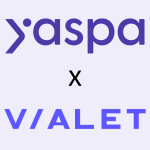
Inclusion is more than a buzzword. It’s a crucial element of a successful business. When a business employs people of differing abilities, it must attend to the varied needs of such workers in order to take full advantage of their skills. One area to consider is the role of visual communication for autistic employees.
How an Inclusive Workplace Benefits Your Business
By employing a diverse workforce, including autistic individuals, businesses can tap into a wide array of talents and skills that can drive innovation and productivity. Employing autistic individuals can also provide insights into the needs and perspectives of a wider customer base, leading to more inclusive products or services.
Challenges That Hinder Autistic Employees
Despite their potential, autistic employees may face several challenges in the workplace. Foremost among these is the false assumption of savant abilities.
Not all autistic individuals possess extraordinary abilities. Expecting every autistic person to achieve extraordinary feats of calculation or memory leads to unfair pressure and causes anxiety and stress.
Another problem is the assumption that all autistic people are alike. Autism is a spectrum disorder, meaning that it affects individuals differently. Recognizing this diversity is crucial for understanding and supporting autistic employees effectively.
The physical work environment can significantly hinder an autistic person’s ability to perform their job. Noise, crowding, bright lights, or strong odors can be overwhelming for autistic individuals, potentially affecting their comfort and productivity.
Expecting autistic people to participate enthusiastically in social activities may be unrealistic. While some autistic people relish the opportunity to socialize with neurotypical peers, many others struggle with social interactions.
Finally, the failure to accommodate communication differences defeats the purpose of employing autistic individuals and can deprive a business of the full contribution of a talented employee. Employers must understand that autistic individuals may require more time to process information and formulate responses to a question or a verbal request.
The Benefits of Visual Communication
This is where the role of visual communication for autistic employees can make all the difference. Many autistic people take in and process visual information much faster than verbal communication. Even the written, rather than the spoken, word can make a difference.
Creating a whiteboard meeting station allows autistic employees to contribute their ideas in writing or diagrams and take in the contributions of their colleagues visually.
And visual communication isn’t just beneficial for autistic employees; it can enhance clarity and understanding for all employees. All employees can benefit from unified communication strategies as they foster more effective and inclusive communication.
As your workplace welcomes more employees of all abilities, your business will experience the benefits of expanded perspectives and points of view. This helps all employees think more comprehensively about new pools of customers that could help your business grow. It all starts with effective communication, so empower all your employees with the technology and equipment they need to be successful.












